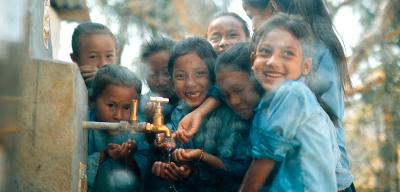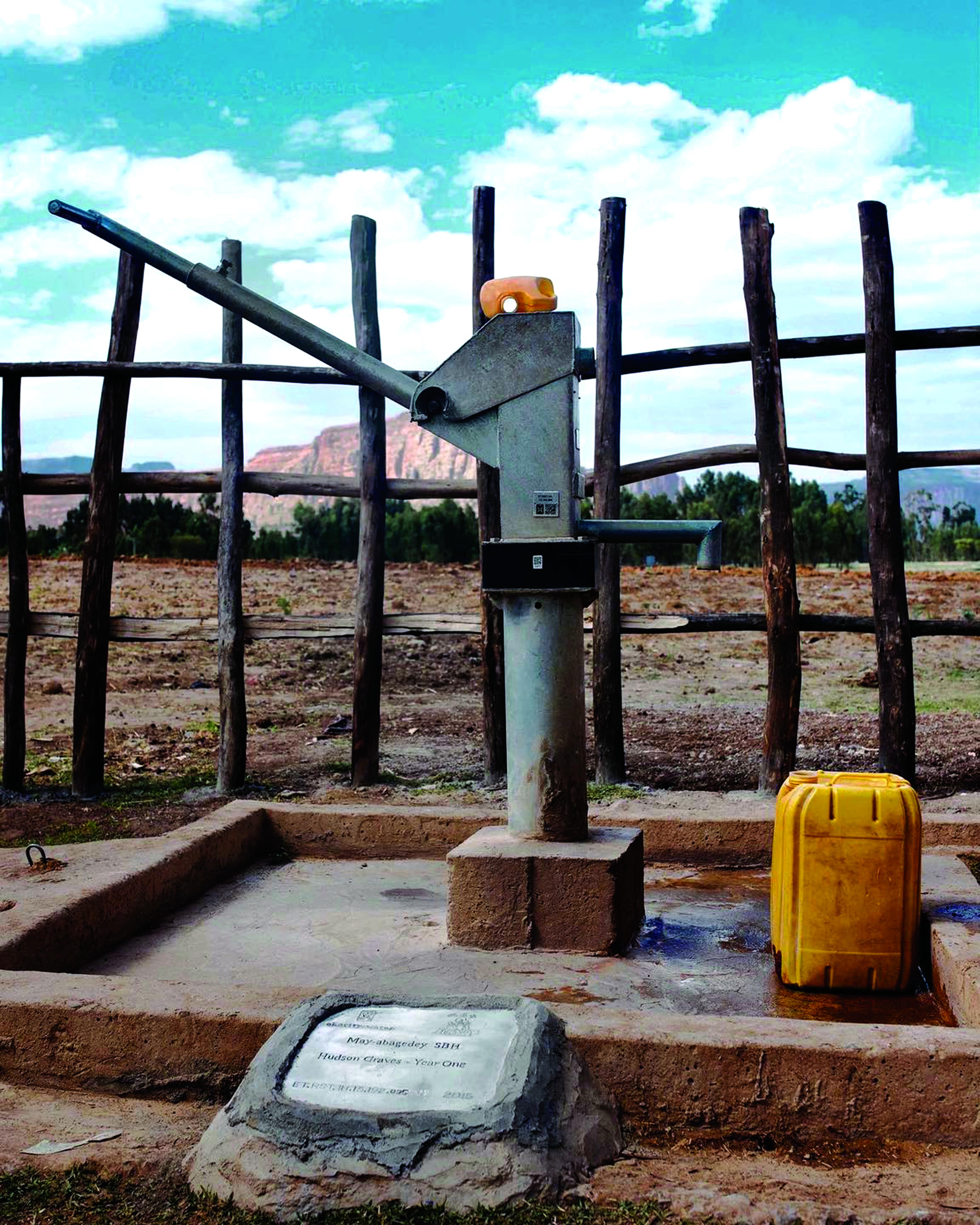- Support portal
- Evaluation Kits and partner products
u-blox Support
- Product documentation
Documentation
- Investor relations
Investor relations
Charity: water

Each year u-blox contributes to helping build sustainable communities through product donations to IoT innovators around the globe - supporting them as they leverage the power of IoT to help others. In 2022 a new model developed by the organization “charity: water” – the India Mark II hand pump - was rolled out across Uganda, Sierra Leone, Papua New Guinea, and Nigeria utilizing SARA-U201 cellular modules and MAX-8C GNSS modules donated by u-blox.
u-blox and charity: water continue to leverage the power of IoT to bring clean drinking water to the world’s most vulnerable. In 2023, charity: water will be field-testing a new version of the Afridev sensor and continuing to pilot.
Keeping lifesaving water flowing with chip to cloud
charity: water created a new path for sustainability in the water sector when in 2012, they invented the first-ever remote sensor to monitor rural water points to ensure an uninterrupted supply of water and put the power of leading-edge IoT and cloud computing technology to work for the world’s poorest people.
Charity: water’s most important objective for 2022 was to field test the first generation of India Mark II handpump sensors in Uganda and use that evaluation to guide1. The two most common types of hand pumps in the developing world are the India Mark II and the Afridev. Countries generally select one or the other as their national standard) the production of the next round of manufacturing and R&D. At the close of 2022, 339 India Mark II sensors were being used by 20 different organizations in Uganda, Sierra Leone, Papua New Guinea, and Nigeria. They estimate these sensors are helping keep clean water flowing for 130,854 people2. Based on the average number of daily users recorded at the 1,554 wells with hand pumps that charity: water has funded in Uganda since 2019, the median number of people who use a hand pump is 386). 90% of devices installed are transmitting data successfully from their location and being used by local mechanics to respond to breakdowns.
1 The two most common types of hand pumps in the developing world are the India Mark II and the Afridev. Countries generally select one or the other as their national standard.
2 Based on the average number of daily users recorded at the 1,554 wells with hand pumps that charity: water has funded in Uganda since 2019, the median number of people who use a hand pump is 386.
771 million people
With 771 million people lacking basic access to clean and safe drinking water, the sustainable water sector is watching closely to see if this pilot project can deliver sustainable gains in terms of safe and clean water access.
The success of this pilot phase has allowed charity: water to begin the production process for an additional 1500 units, which they estimate will help keep clean water flowing for 579,000 people living in remote parts of the world. u-blox has continued to support this initiative by donating the additional modules needed for this scaled-up production.
“We’re building a lifesaving application and need reliable technology to communicate with the cloud. u-blox modules have performed amazingly well and are a critical part of our commitment to keeping clean water flowing for the world’s most vulnerable communities. We’re so grateful for u-blox’s support of our innovation and mission,” said Christoph Gorder, Chief Global Water Officer, charity: water.
Sensors are critical to maintaining functionality
The data from the India Mark II sensors have helped the NGOs implementing them to maintain high levels of functionality at their water points and to support existing maintenance programs.

A charity: water sensor-equipped handpump
One such program in Uganda, Everflow, an enterprise arm of the International Lifeline Fund, has sensors installed on 32 of their India Mark II handpumps in Northern Uganda. Isaac, one of their WASH (WAter, Sanitation, and Hygiene) Engineers, shared this feedback with the charity: water team on a recent visit to Uganda:
“Having sensors on the water points allows us to quickly reach out to the community members when we see issues arise, rather than waiting for them to identify a problem and report it, which is often not until water is no longer available at the site. This has built stronger trust between the community and our maintenance program and decreased our response, repair times, and costs, keeping water flowing for our communities and eliminating the need to return to dirty water sources.”
Lear more: https://www.charitywater.org/